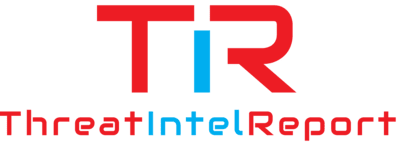In June 2024, Microsoft released a crucial security update addressing CVE-2024-31821, a critical elevation of privilege (EoP) vulnerability affecting Microsoft Outlook. This vulnerability, if successfully exploited, could allow an attacker to gain higher-level access to the system, bypassing normal user restrictions. Microsoft has classified this flaw as “Important” due to its potential to escalate privileges, giving attackers deeper access to the target system.
What is CVE-2024-31821?
CVE-2024-31821 is an Elevation of Privilege (EoP) vulnerability found in Microsoft Outlook, which is widely used by both corporate and individual users globally. The flaw exists in how Outlook handles specially crafted emails, potentially allowing attackers to manipulate the victim’s privileges without their knowledge.
An attacker could exploit this vulnerability by sending a malicious email to the target, and simply viewing the email could trigger the flaw. This makes it a no-click exploit in some cases, where the victim doesn’t need to open attachments or click on malicious links—just the act of receiving or viewing the email could be enough to escalate privileges.
Once exploited, the attacker could:
- Gain administrator-level control over the system
- Access sensitive files and configurations
- Install malicious software like spyware or ransomware
- Alter system settings or disable security mechanisms(CyberSec UK).
Exploitation Method
This vulnerability could be exploited in the following ways:
- Phishing Emails: Attackers send specially crafted emails that trigger the vulnerability when the target receives or views the email in Outlook. The payload can exploit the flaw and escalate privileges, allowing the attacker to operate with elevated rights on the system.
- Social Engineering: Attackers may also combine this vulnerability with social engineering tactics, manipulating the user into interacting with a seemingly harmless email to further facilitate the exploitation process.
One reason this vulnerability is especially dangerous is that Outlook is used in various environments where email is a critical communication tool, making it difficult for users to avoid receiving potentially malicious emails.
Is This Vulnerability Actively Exploited?
At the time of the June 2024 patch release, there were no confirmed reports of active exploitation of CVE-2024-31821 in the wild. However, given the nature of elevation of privilege vulnerabilities and their potential for severe impacts, it is highly likely that cybercriminals will move quickly to take advantage of this flaw, especially after the release of a proof-of-concept (PoC) exploit(
Microsoft has not provided specific details on whether a PoC exists, but researchers often reverse-engineer the patches shortly after release, meaning that attackers could soon develop and circulate PoCs capable of exploiting this Outlook vulnerability.
How to Mitigate the Risk
Organizations and individual users should take the following steps to mitigate the risks associated with CVE-2024-31821:
- Apply the June 2024 Patch Immediately: This vulnerability has been resolved in the June 2024 Patch Tuesday updates. Microsoft has released updates to fix this issue across all affected versions of Outlook. Ensuring that Outlook is up to date is critical to avoid exploitation.
- Educate Users About Phishing Attacks: Since this flaw can be triggered by a malicious email, users should be reminded of best practices for avoiding phishing attacks. Even though this vulnerability may not require a click, reducing email-based attack vectors is always important.
- Implement Network-Based Protections: Organizations should ensure that emails are scanned for malicious content before they reach end-users. Endpoint protection and email filtering solutions can provide an extra layer of security.
Outlook’s History with Security Vulnerabilities
This is not the first time that Microsoft Outlook has been the target of critical vulnerabilities. In the past, attackers have frequently used Outlook as a vector for phishing campaigns, email-borne malware, and privilege escalation attacks. This pattern of attack continues to underscore the importance of maintaining strict security measures for email applications, particularly in enterprise environments where Outlook is used as a primary communication tool(
The CVE-2024-31821 vulnerability poses a significant risk due to its potential for elevation of privilege attacks in Microsoft Outlook. While no active exploits have been reported yet, it is crucial that organizations patch their systems immediately to prevent exploitation once proof-of-concept code becomes available. Educating users about email security and phishing threats, as well as applying Microsoft’s security updates, are critical steps in mitigating this threat.
Further Reading
- Microsoft’s Official June 2024 Security Patch Notes
- How Phishing Emails Can Trigger Elevation of Privilege
- Critical Outlook Vulnerabilities and How to Stay Protected
